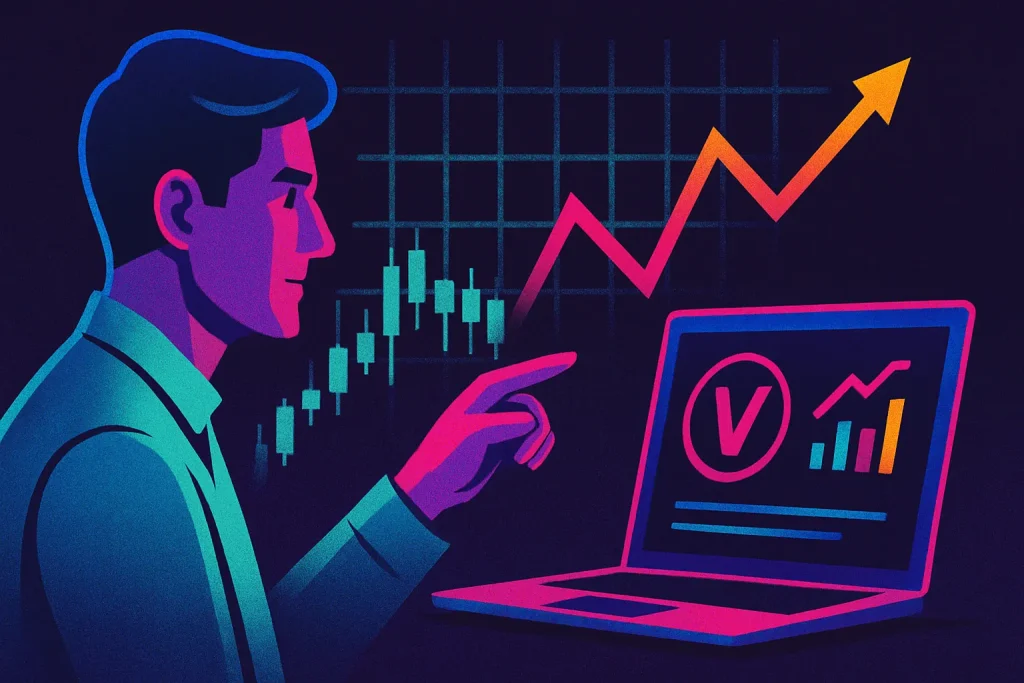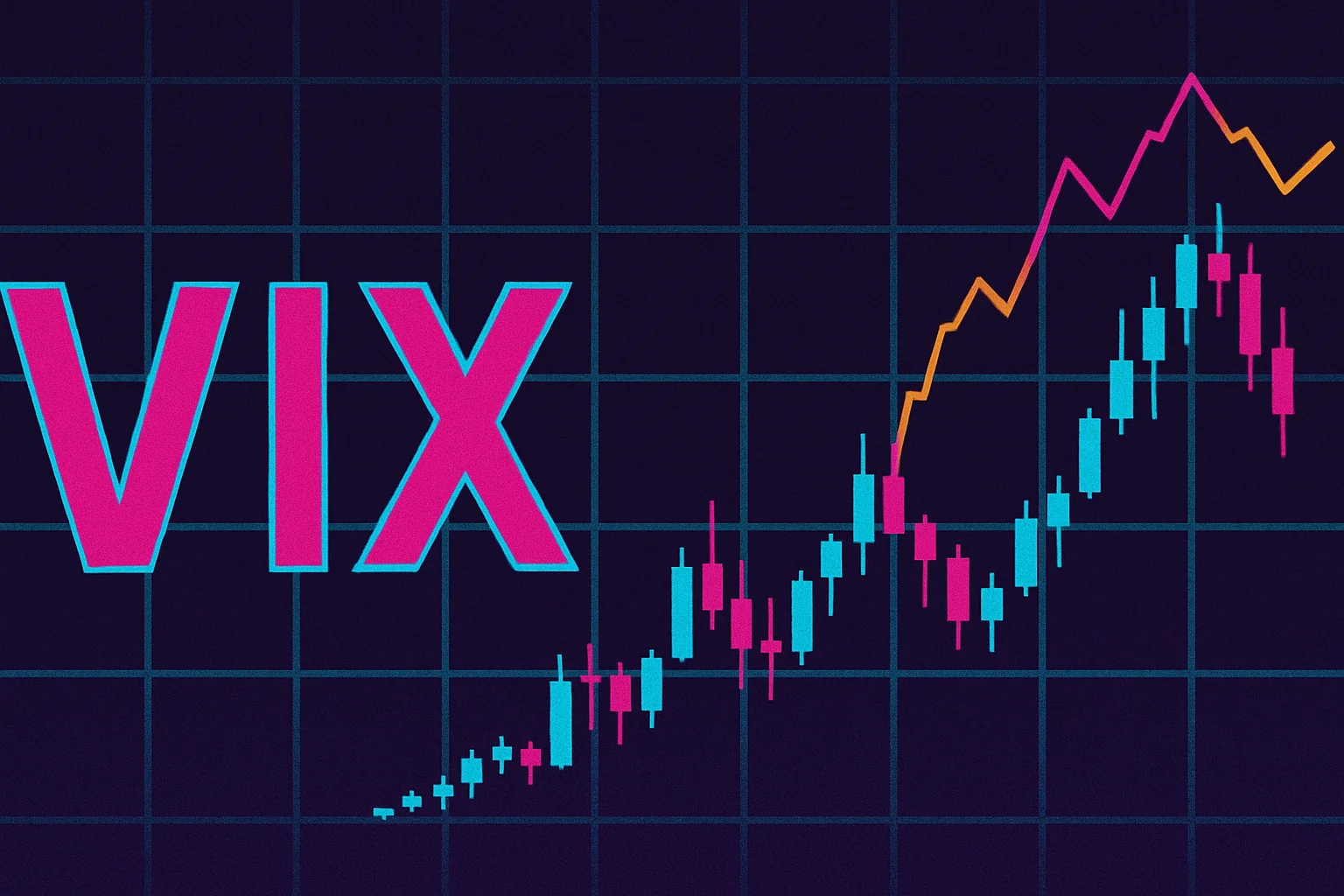When exploring the world of cryptocurrency and digital markets, many people ask, what is VIX Stock and why does it matter? The VIX, also known as the Volatility Index, often plays a crucial role in analyzing financial conditions, including areas linked to digital currency and blockchain systems. In recent years, traders have used the VIX as a benchmark to gauge fear or stability in global markets.
Understanding this concept is vital, especially for those building a crypto account or entering trading with digital assets. The VIX has connections not just to traditional stock markets but also to cryptocurrency dynamics. By learning its basics, investors gain valuable insights into how volatility influences decision-making, risk strategies, and overall investment performance.
This article provides a comprehensive breakdown of the VIX, its meaning, historical background, and practical applications, helping readers understand why it’s relevant even in cryptocurrency discussions today.
Definition
The VIX Stock, widely referred to as the Volatility Index or the “fear gauge,” is a financial metric that tracks expected volatility in the stock market. When people ask, VIX Stock, the answer revolves around measuring investor sentiment. High VIX values suggest heightened uncertainty, while low values imply stability.
In the cryptocurrency community, understanding this definition helps traders evaluate risk. Although the VIX originates from traditional markets, many parallels exist in the digital currency ecosystem. The same fear and greed reflected in stocks can also apply to Bitcoin, Ethereum, and other blockchain-based assets.
Synonyms often used alongside VIX Stock include volatility index, fear index, and risk gauge. Each describes the same underlying concept of measuring projected instability.
By understanding the VIX definition, traders and investors gain a tool for predicting potential market swings. While it doesn’t apply exclusively to crypto trading, its importance grows as global financial systems become more interconnected. Knowing this definition allows crypto enthusiasts to anticipate how volatility may ripple into their digital currency investments.
Detailed Explanation
Key Components
The VIX measures expected volatility using options prices. In simple terms, it estimates how much investors believe the market will fluctuate within the next 30 days. It does not predict direction but highlights the likelihood of strong movements, either upward or downward.
Relationship to Cryptocurrency
Though designed for traditional equities, the concept influences cryptocurrency discussions. Digital assets are already volatile, but global stock volatility often signals broader investor sentiment. When the VIX rises, traders may move funds into or out of blockchain-based assets.
Example in Trading
For instance, during economic uncertainty, the VIX tends to spike. Investors with crypto accounts often see mirrored activity in Bitcoin or other coins, as fear drives more cautious behavior. This correlation doesn’t mean crypto is directly tied to VIX but shows how market psychology crosses over.
Utility for Crypto Enthusiasts
By integrating VIX insights into crypto wallet strategies, traders can manage risk more effectively. For example, a high VIX period may suggest avoiding overly speculative trades, while a low VIX might encourage more active positions.
Broader View
The VIX Stock explained reveals it as a concept bridging finance and psychology. It underscores how emotion shapes decisions in trading and investing. Even in decentralized blockchain systems, sentiment often dictates value fluctuations.
This detailed explanation makes clear why understanding VIX matters, not just in traditional investing but also in cryptocurrency strategies.
History or Origin
The origins of VIX Stock date back to 1993, when the Chicago Board Options Exchange (CBOE) created it. Initially designed to measure S&P 100 volatility, it later expanded to cover the S&P 500, becoming the standard volatility index worldwide.
In its early years, the VIX was mainly used by professional traders. Over time, as digital assets gained attention, parallels were drawn between volatility in traditional markets and cryptocurrency trading. Although the VIX was not originally created with blockchain in mind, its role in highlighting uncertainty makes it relevant across financial systems.
The rise of digital currency and crypto wallets introduced new layers of risk. However, the VIX remains a foundational measure of fear and risk sentiment. Its historical journey shows how one concept, designed decades ago, now provides context in understanding modern markets—including the fast-evolving cryptocurrency sector.
Applications or Uses

The practical uses of VIX Stock extend across traditional finance and the cryptocurrency space.
Risk Assessment
Investors often use VIX to gauge when markets are too risky. For cryptocurrency holders, this is valuable. A high VIX suggests broader financial instability, which can spill into digital currency markets. This means that traders who pay attention to volatility indices can anticipate shifts that may affect the value of their crypto wallet or overall portfolio. Understanding what is VIX Stock also helps identify whether fear in the stock market may lead to a domino effect in the blockchain industry.
Trading Strategies
For crypto account managers, pairing VIX insights with blockchain analytics strengthens decision-making. During spikes in the VIX, traders might adopt hedging strategies to protect their assets. These may include moving investments into stablecoins, reducing positions in speculative tokens, or increasing exposure to more liquid assets. Some investors even use algorithmic trading bots that combine VIX signals with on-chain data, making trading decisions more precise.
Portfolio Management
Including VIX awareness in crypto wallet planning helps balance assets. For example, some traders may reduce altcoin exposure when the VIX rises, shifting focus to stablecoins or safer assets. This approach creates a buffer against sudden swings in digital currency prices. Others use VIX as a long-term diversification tool, ensuring that their holdings reflect both high-risk and low-risk opportunities.
Education and Awareness
Beyond trading, the VIX serves as an educational tool. Learning what is VIX Stock equips crypto enthusiasts with a clearer understanding of how global markets interact with digital assets. It can also encourage new investors to study the relationship between traditional markets and cryptocurrency trading. For anyone exploring blockchain for the first time, VIX knowledge provides perspective on why volatility matters.
Broader Financial Influence
Finally, the VIX reflects global trends. Its influence shows up not only in Wall Street reports but also in cryptocurrency exchanges worldwide. The combination of traditional finance signals and blockchain innovation makes it a versatile concept for modern investors. By following VIX movements, even digital currency traders can anticipate how macroeconomic events—such as interest rate changes or political instability—might influence their investments. This connection ensures that crypto investors remain informed and adaptable.
Resources
- ResearchGate: VIX Stock Financial Volatility Studies
- Investopedia: VIX explanation
- CBOE Official Website: VIX real-time data, charts, and official reports
- Trading in the Zone: VIX classic information resource
- CoinTelegraph: VIX Stock Market Analysis
- CoinDesk: VIX Volatility Coverage

